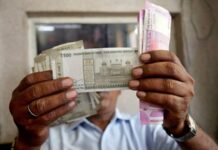
LAHORE: The Ministry of Finances’ “Debt Policy Statement” for 2018-19 revealed the total public debt and liabilities breached Rs30 trillion by the end of September 2018.
According to the report, total public debt as a percentage of GDP stood at 72.5 percent while total debt of the government recorded at 67 percent as of end June 2018, remaining significantly higher than the 60% threshold envisaged in the Fiscal Responsibility & Debt Limitation (FRDL) Act, 2005.
The debt policy statement highlighted that composition of public debt in terms of maturity profile continued to exhibit unfavourable changes during 2017-18, as the government depended mainly on short-term domestic borrowing and most of the external loans were obtained through commercial sources.
It added this resulted in a breach in few indicative ranges for public debt risk indicators as defined in Medium Term Debt Management Strategy (2015-16-2018/19).
Moreover, the government could only adhere to the net-zero quarterly limit under the revised SBP Act 1956 in the second and fourth quarters of 2017-18.
Floating rate bonds were introduced by the government with 10-year tenors to decrease the refinancing risk of its domestic debt portfolio and interest payments consumed 29% of government revenue, said the report.
Additionally, the government raised $2.5 billion via a five-year Sukuk and 10-year conventional bond with the latter issued at 6.875%, the lowest rate for a Pakistan ten-year international bond.
Due to rising twin deficits (current account and fiscal) hastened the pace of debt accumulation during 2017-18.
Total public debt touched Rs24,953 billion by end of June 2018, exhibiting an increase of Rs3,544 billion during the year.
It noted the main drivers of this rise were the budget deficit which touched its highest level in the last five years of 6.6% of GDP or Rs2,260 billion.
Consequently, the higher fiscal deficit raised government dependence on borrowing from domestic and external sources, especially the domestic banking sector, said the report.
As per the report, the government borrowed Rs1,120 billion from banking sources, Rs353 billion from non-bank sources, whilst external borrowing for covering the budget deficit stood at Rs785 billion.
Due to revaluation losses and appreciation of international currencies against the greenback and devaluation of the rupee against the dollar caused the total public debt to rise by around Rs1.2 trillion.
The rest of the rise in total public debt was because of increase in credit balances of the government with the banking system, observed the report.
Consequently, an increase of 5.6% points was witnessed in total public debt to 72.5% of GDP by end of June 2018.
Also, aside total public debt, major increase in public-sector enterprises (PSEs) debt, loans for commodity operations and external liabilities pushed the country’s total debt and liabilities to 82.11% of GDP by end of June last year compared to 74.9% in June 2017.
During the first quarter (July-September) of 2018-19, total public debt reached Rs 25,783 billion at end September 2018 registering an increase of Rs 831 billion, said the report.
The reason for this rise in total public debt was attributed to an increase in domestic debt of Rs504 billion, whilst government borrowing for funding of fiscal deficit from domestic sources was Rs331 billion.
And the increase in external debt contributed Rs327 billion to total public debt, whilst government borrowing for the financing of fiscal deficit from external sources was about Rs211 billion.
This differential was primarily due to revaluation losses on account of depreciation of Pakistani rupee against the greenback, said the report.






